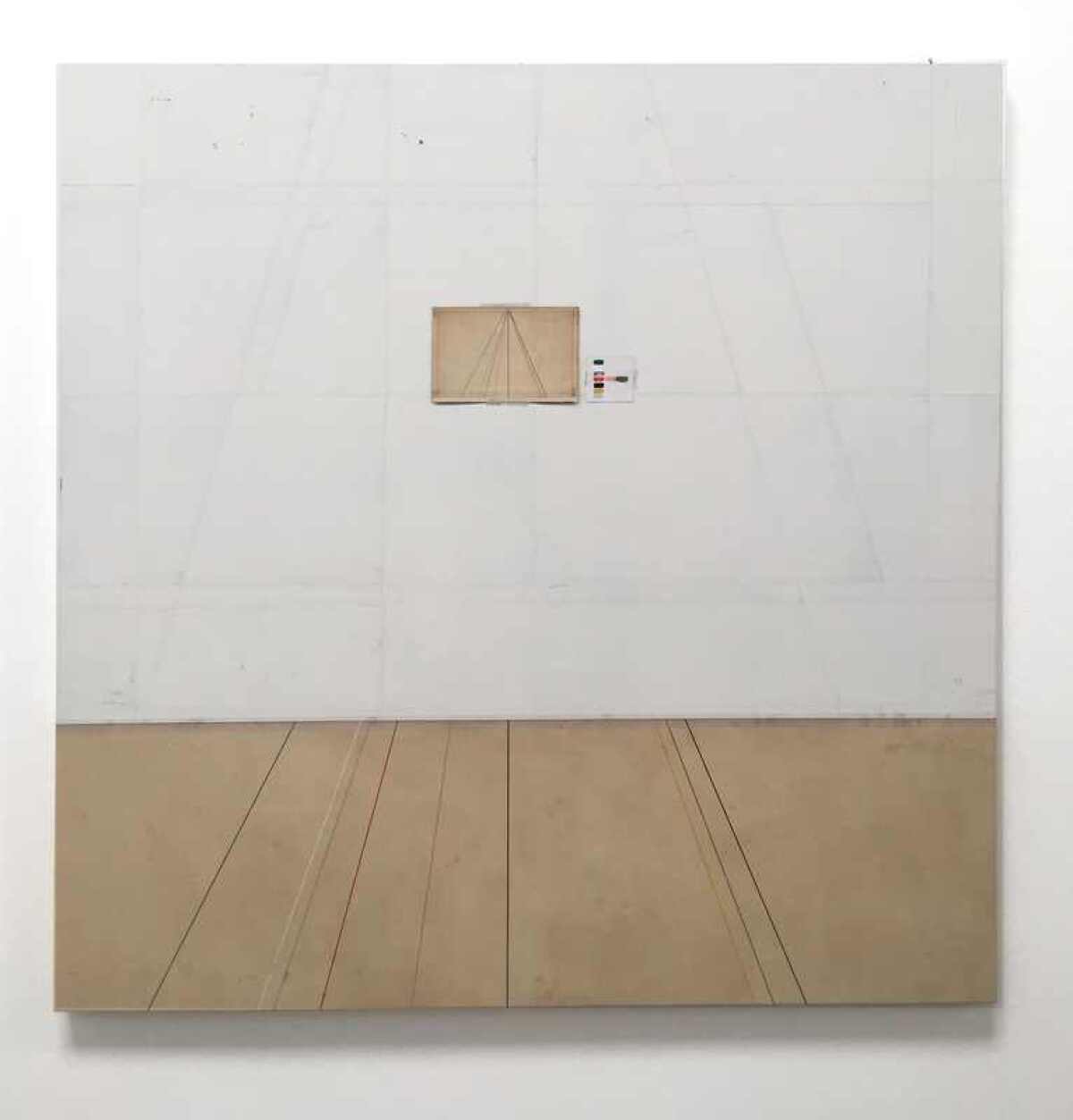Review: In Gary Edward Blum’s paintings, everything is not what it seems
- Share via
“The Silence Around You,” the title of Gary Edward Blum’s stimulating show as well as one of its paintings, hints of the counterintuitive.
We often hear of the silence within, an inner calm that can steady us against external demands and decibels. Blum’s paintings at Ruth Bachofner Gallery do project a sense of stillness, but the more the works reveal themselves, the more they rumble and hum.
The visual and conceptual propositions they embody clatter against equally persuasive counterpropositions. Each painted surface, each object (because these canvases also flirt with the sculptural) seems at first a quiet meditation but is, in effect, a bustling forum.
SIGN UP for the free Essential Arts & Culture newsletter »
Blum, based in Oakland, structures each of the seven works here in roughly the same way. He divides the square field (30 by 30 inches or 50 by 50 inches) horizontally into two uneven parts, typically painting the larger upper portion a neutral eggshell and the bottom section a darker taupe or, in one case, aqua.
To this spare foundation, Blum adds an illusionistic grace note — a small abstract composition that looks like either a sketch or reproduction on a discrete manila card taped to what now reads as a wall. Are these paintings studio interiors, distilled and fragmented? Perhaps. One more metaphorical step and they invoke the echo chamber of the artist's mind.
Across most of the paintings, slender, slightly raised lines further segment the surface, slicing it up with the neat geometry of an architect or engineer. The room becomes floor plan becomes room again as Blum squeezes every kind of juice from the picture plane. He reiterates the canvases' flat front and at the same time asserts dimension, through evidence (however contrived) of time and wear.
He pays extraordinary attention to textural detail. In some places the paint wrinkles like skin, and in others it’s scraped and abraded. Edges appear nicked, chipped. The filmy stripe where upper and lower sections meet looks, convincingly, like a strip of tape or maybe its residue.

Other exquisite trompe l'oeil moments occur around those wall-mounted cards. "Erased Form" has two such cards. The larger one contains an opaque black wedge on the left and a fine, bent line on the right. Both read as abstract shapes; both also imply depth and passage. The border of that card bears the (painted) scars of removed staples, and the (painted) tape along its edges is marred by (painted) fingerprints and grit.
Blum's work brims with sensory intelligence. He paints like a 19th century American realist (think Harold Peto or William Harnett) steeped in the marvels of 17th century Dutch still life. Much like the postcards and letters affixed to walls in those earlier works, the little images that Blum positions so centrally in his paintings are autobiographical keepers, notes to self about form and depth, line and illusion, pictorial order and the brilliant ways to disrupt it.
------------
Ruth Bachofner Gallery, Bergamot Station, 2525 Michigan Ave., Santa Monica. Through Sept. 3; closed Sundays and Mondays. (310) 829-3300, www.ruthbachofnergallery.com

Follow The Times’ arts team @culturemonster.
ALSO
LACMA's exhibition 'Sculpt': Incoherent pretension for an audience of one
The art of the developmentally disabled on its own terms, minus the lens of sympathy
The biggest entertainment stories
Get our big stories about Hollywood, film, television, music, arts, culture and more right in your inbox as soon as they publish.
You may occasionally receive promotional content from the Los Angeles Times.







